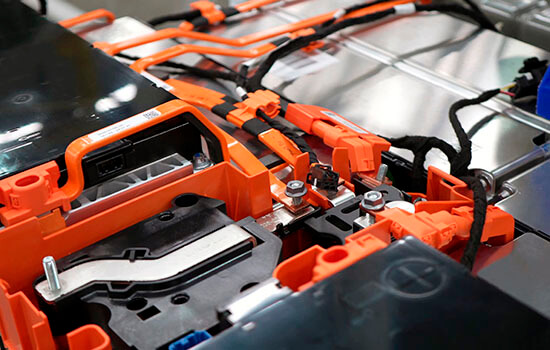Power Integrations’ Q2 2025: Navigating Contradictions in Automotive Revenue, Industrial Growth, and Market Dynamics – AInvest

Q2 2025 Performance Report: Industrial Growth and SDG Alignment
Financial and Sector Performance
Power Integrations has reported a total revenue of $116 million for the second quarter of 2025, marking a 9% year-over-year increase. This growth was primarily propelled by significant advancements in the industrial sector.
- Industrial Sales: Experienced a 30% growth, driven by strong demand in metering, industrial automation, and high-power applications. This progress directly supports SDG 9 (Industry, Innovation, and Infrastructure) by enhancing industrial efficiency and resilience.
- Consumer Segment: A decline was noted in the consumer appliance market, attributed largely to the impact of tariffs.
Technological Innovation and Contribution to Sustainable Development
The company’s focus on advanced technologies, particularly Gallium Nitride (GaN), has yielded substantial growth and expanded its contribution to global sustainability targets.
Gallium Nitride (GaN) Product Expansion
Revenue from GaN-based products has surged by 50% year-to-date, reflecting successful market penetration and technological leadership.
- Energy Efficiency Gains: The inherent efficiency of GaN technology reduces energy consumption in end-products, directly contributing to SDG 7 (Affordable and Clean Energy) and SDG 12 (Responsible Consumption and Production).
- New Market Development: Expansion into AI data centers with 1250V GaN capabilities addresses the critical need for energy-efficient computing infrastructure, aligning with SDG 9. The technology is also enhancing efficiency in notebooks, televisions, and gaming consoles.
Automotive Sector Outlook
Strategic design wins within the global automotive industry are poised to generate significant revenue streams, with initial contributions expected in 2026. These developments are crucial for advancing sustainable transportation.
- Support for E-Mobility: By providing key components for electric vehicles and related systems, the company aids the transition to cleaner transport, supporting SDG 11 (Sustainable Cities and Communities) and SDG 13 (Climate Action).
Corporate Strategy and Leadership
CEO Transition and Future Focus
The appointment of Jennifer Lloyd, formerly of Analog Devices, as the new CEO signals a strategic pivot to capitalize on high-voltage technology expertise. This leadership change is intended to accelerate growth in key markets that are integral to sustainable development.
- Strategic Priorities: The new leadership aims to leverage deep expertise in high-voltage applications to further penetrate the industrial and automotive sectors, reinforcing the company’s commitment to innovations that underpin SDG 7 and SDG 9.
1. Which SDGs are addressed or connected to the issues highlighted in the article?
Based on the article, the following Sustainable Development Goals (SDGs) are addressed:
- SDG 7: Affordable and Clean Energy – The article’s focus on Gallium Nitride (GaN) technology, which significantly boosts energy efficiency in electronics like data centers, notebooks, and TVs, directly relates to improving energy use.
- SDG 9: Industry, Innovation and Infrastructure – The report highlights growth in industrial sales from automation and high-power sectors, expansion into AI data centers, and automotive design wins. This points to innovation in industrial processes and infrastructure development.
- SDG 11: Sustainable Cities and Communities – The mention of “automotive design wins” and “high-voltage expertise” strongly implies involvement in the electric vehicle (EV) market, which is a key component of developing sustainable transport systems for modern cities.
2. What specific targets under those SDGs can be identified based on the article’s content?
The article’s content points to the following specific SDG targets:
-
SDG 7: Affordable and Clean Energy
- Target 7.3: By 2030, double the global rate of improvement in energy efficiency. The article supports this target by highlighting that “GaN product revenue surged 50% YTD.” GaN technology is a key enabler of higher energy efficiency in power supplies, and its increased adoption in markets like “AI data centers,” “notebooks, TVs, and gaming” contributes directly to this goal.
-
SDG 9: Industry, Innovation and Infrastructure
- Target 9.4: By 2030, upgrade infrastructure and retrofit industries to make them sustainable, with increased resource-use efficiency and greater adoption of clean and environmentally sound technologies and processes. The article reflects progress toward this target through its report of “30% industrial sales growth from metering, automation, and high-power sectors.” These sectors are adopting more efficient power technologies to upgrade their operations. The expansion of energy-efficient GaN into “AI data centers” is a prime example of upgrading critical infrastructure.
-
SDG 11: Sustainable Cities and Communities
- Target 11.2: By 2030, provide access to safe, affordable, accessible and sustainable transport systems for all. The company’s “automotive design wins” and “high-voltage expertise” are directly relevant to the development of electric vehicles. EVs are a cornerstone of sustainable transport systems, and the company’s success in this area indicates a contribution to achieving this target.
3. Are there any indicators mentioned or implied in the article that can be used to measure progress towards the identified targets?
Yes, the article provides several quantitative and qualitative indicators that can measure progress:
- For Target 7.3 (Energy Efficiency): The “50% YTD” surge in GaN product revenue serves as a direct market indicator for the adoption rate of energy-efficient technologies in the electronics sector.
- For Target 9.4 (Sustainable Industry): The “30% industrial sales growth” is a clear indicator of the increasing modernization and retrofitting of industries with more efficient technologies. The specific mention of “metering, automation, and high-power sectors” provides granular detail on where this progress is occurring.
- For Target 11.2 (Sustainable Transport): The “automotive design wins” and the forecast of “2026 automotive revenue expectations” act as forward-looking indicators. They measure the company’s growing role and integration into the supply chain for sustainable transport systems, particularly electric vehicles.
4. Create a table with three columns titled ‘SDGs, Targets and Indicators” to present the findings from analyzing the article.
| SDGs | Targets | Indicators |
|---|---|---|
| SDG 7: Affordable and Clean Energy | Target 7.3: Double the global rate of improvement in energy efficiency. | GaN product revenue surged 50% YTD, indicating wider adoption of energy-efficient technology in data centers, notebooks, TVs, and gaming markets. |
| SDG 9: Industry, Innovation and Infrastructure | Target 9.4: Upgrade infrastructure and retrofit industries to make them sustainable and resource-efficient. | 30% industrial sales growth from metering, automation, and high-power sectors, showing adoption of modern, efficient technologies. |
| SDG 11: Sustainable Cities and Communities | Target 11.2: Provide access to sustainable transport systems for all. | “Automotive design wins” and “2026 automotive revenue expectations” indicating contribution to the electric vehicle market. |
Source: ainvest.com

What is Your Reaction?
 Like
0
Like
0
 Dislike
0
Dislike
0
 Love
0
Love
0
 Funny
0
Funny
0
 Angry
0
Angry
0
 Sad
0
Sad
0
 Wow
0
Wow
0












































































